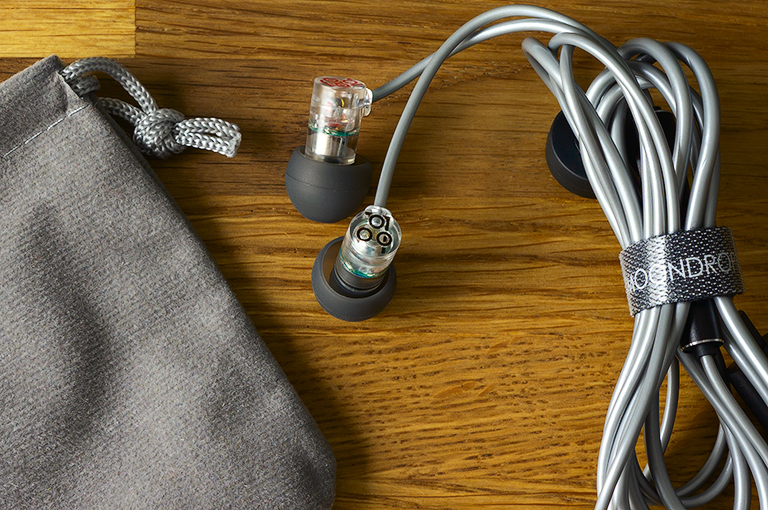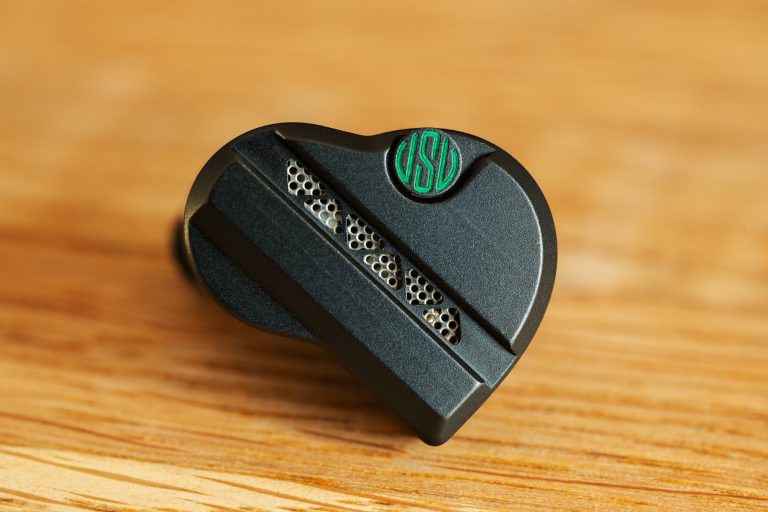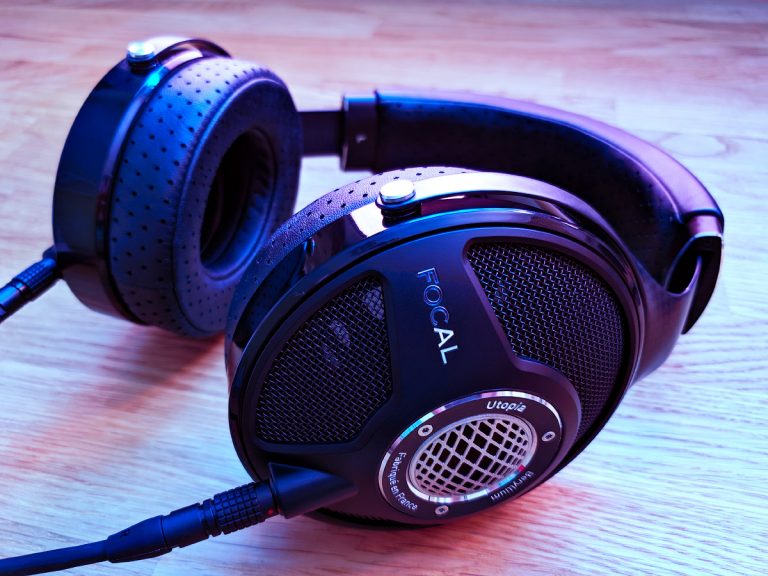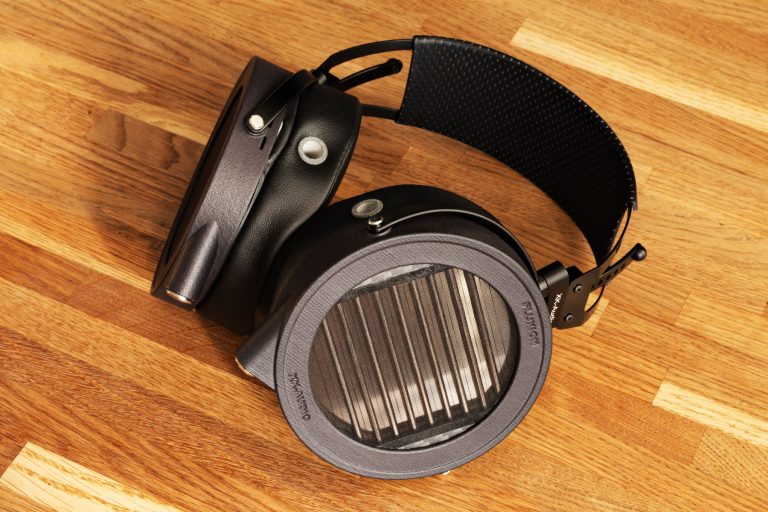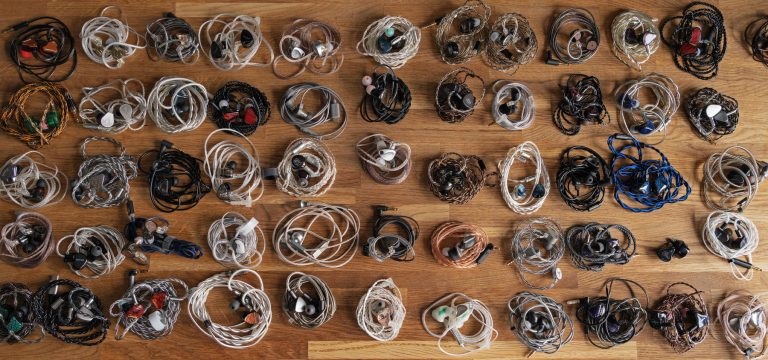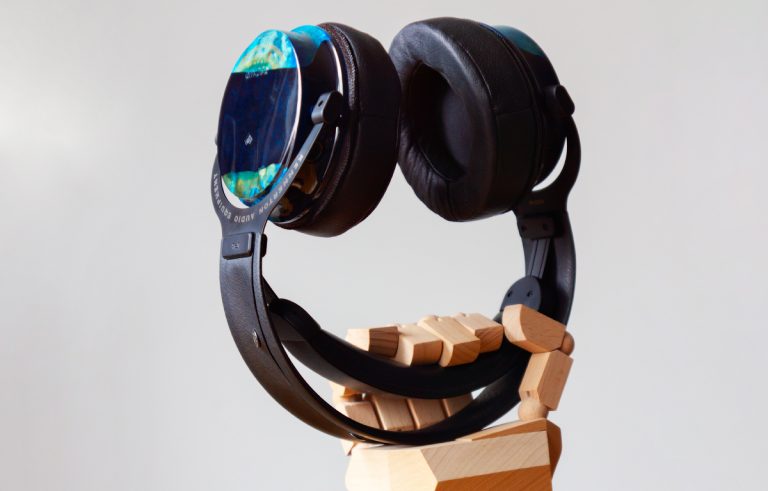The Noble Audio FoKus Mystique TWS Headphones Review. You don’t need it
Russian version of the article.
The first TWS Noble Audio headphones I’ve ever laid my hands on – the Falcon Pro – turned out to be pathetically shitty. Their sounding was actually something you could argue about, but the number of bugs and twitches… Oof! And, as I said some reviews ago, just don’t ever buy this nonsense for any money. What do you think happened just recently? A follower brought me their new model to review – and for this I’m thankful infinitely. No one can turn down a chance to tickle some $360-worth of headphones. No one.
Alex, dear! If you’re reading this, once again – thanks a million!
Well, enough introductions! Today we’re going to see if the latest John ‘Wizzard’ Moulton’s creation is a success. here come the Noble FoKus Mystique (hereinafter — NFM), the hybrid three-driver TWS headphones costing $360.
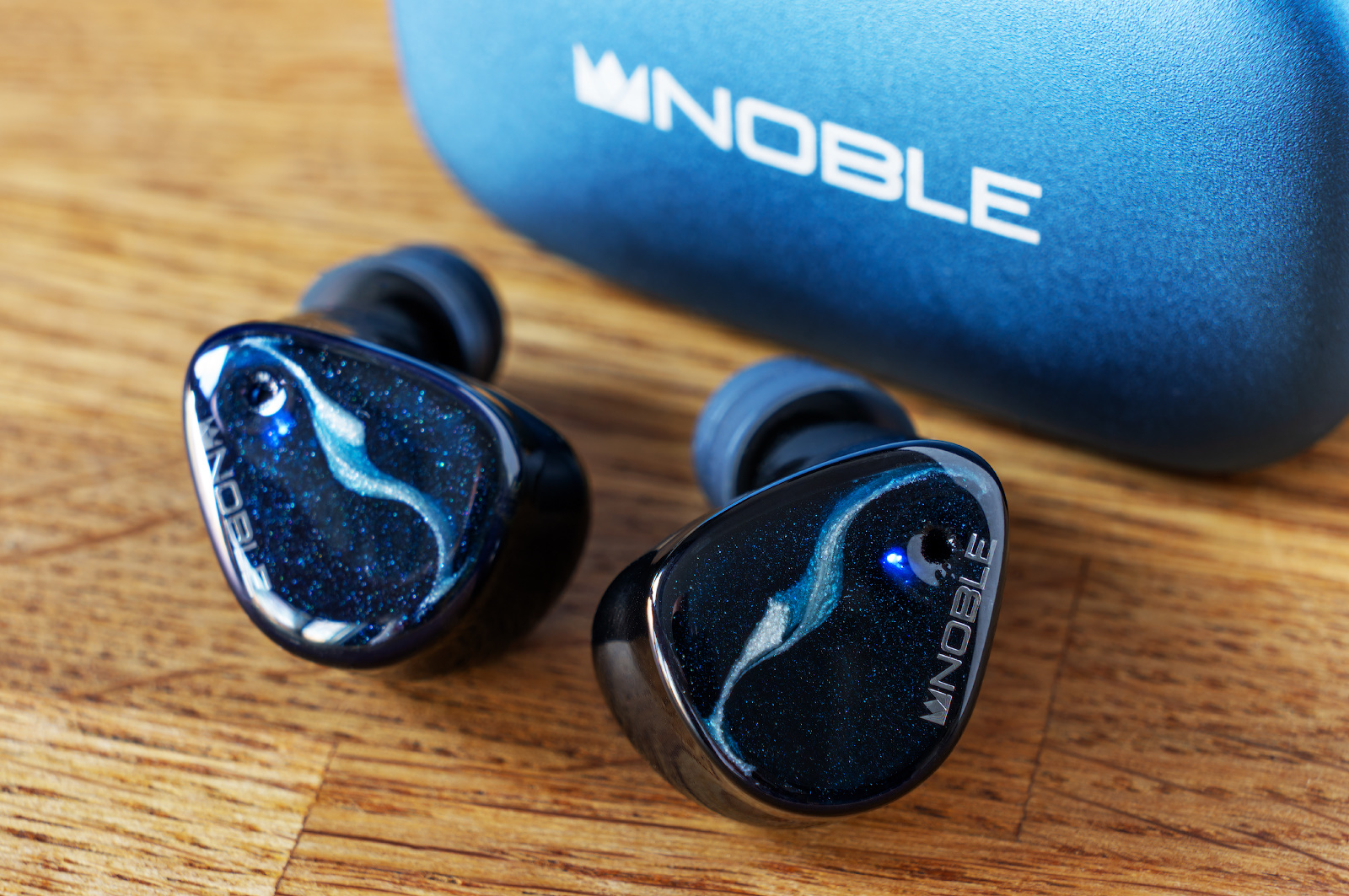
While working on this review, the following software versions were used.
- Headphone firmware: HP2068-ANC_20221117_v0.0.5
- Noble FoKus Android app: 1.4.6
What’s included
Aside from the headphones and the case, the box contained the following stuff.
- A set of eartips (3 pairs of single-flange and 3 pairs of 2-flange).
- A short USB Charging Cable (Type-A to Type-C).
- A soft bag.
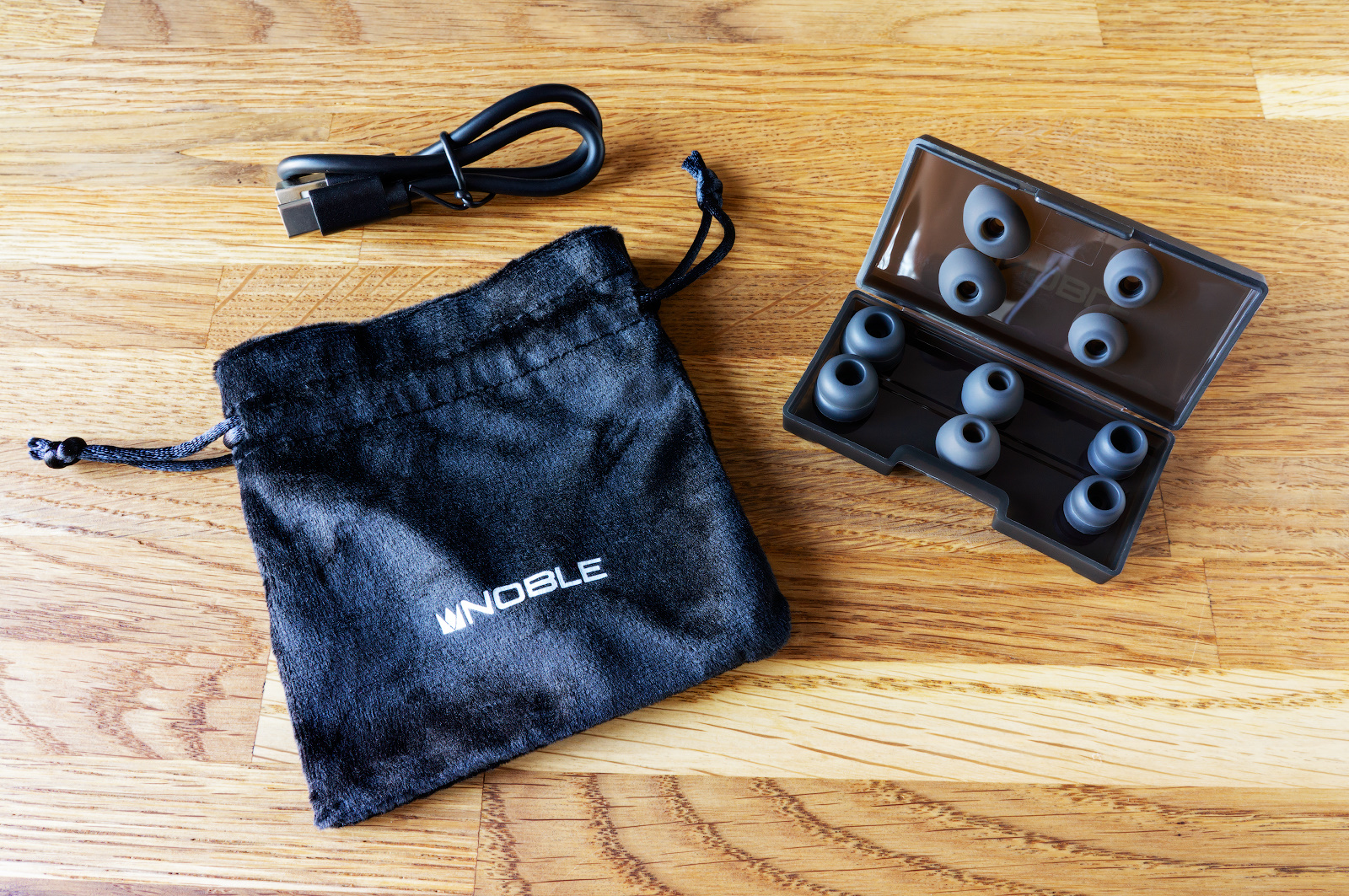
Build, materials, design
The case seems to be made of 4-inch steel, no less. Huge case weight – that’s what you basically think when you first take that trunk. It’s really heavy, and it’s big… and pleasantly cool to the touch. It’s not steel, of course, – it’s aluminum. I think the manufacturer tried to create an aura of a premium product. Did it work? Not really: the lid is loose, and there are gaps at the joints.
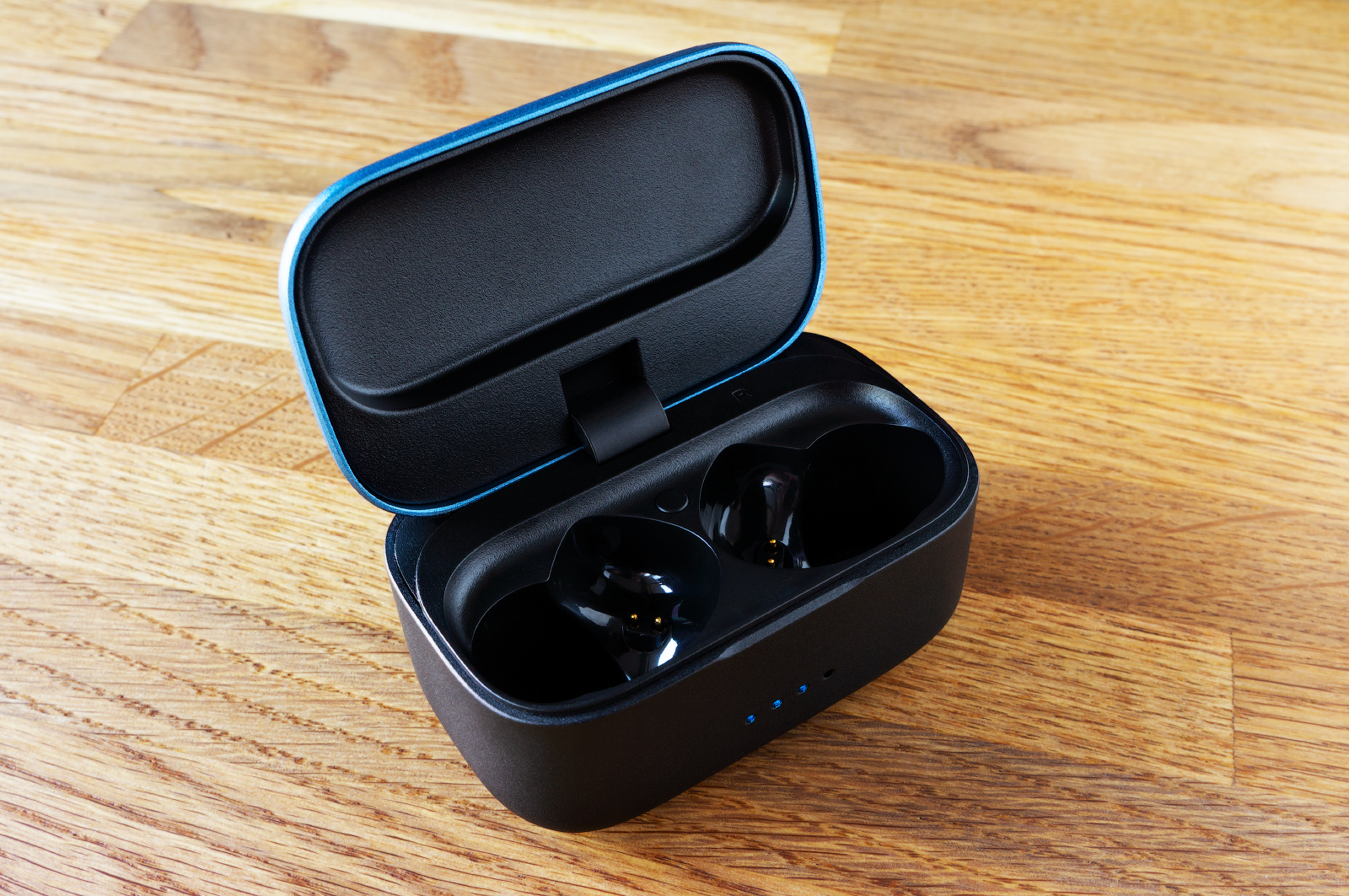
There are 4 blue LEDs on the front indicating the charging status. The rear side only sports a Type-C charging port. As for the insides, here are the unsurprising earpiece slots with a pair of spring–loaded contacts in each of them. The hardware reset button is located in between. The headphones sit firmly in their sockets thanks to magnets.
As for the headphones themselves, these look like some extremely generalized ‘custom’ model. 3D-printed and varnished.
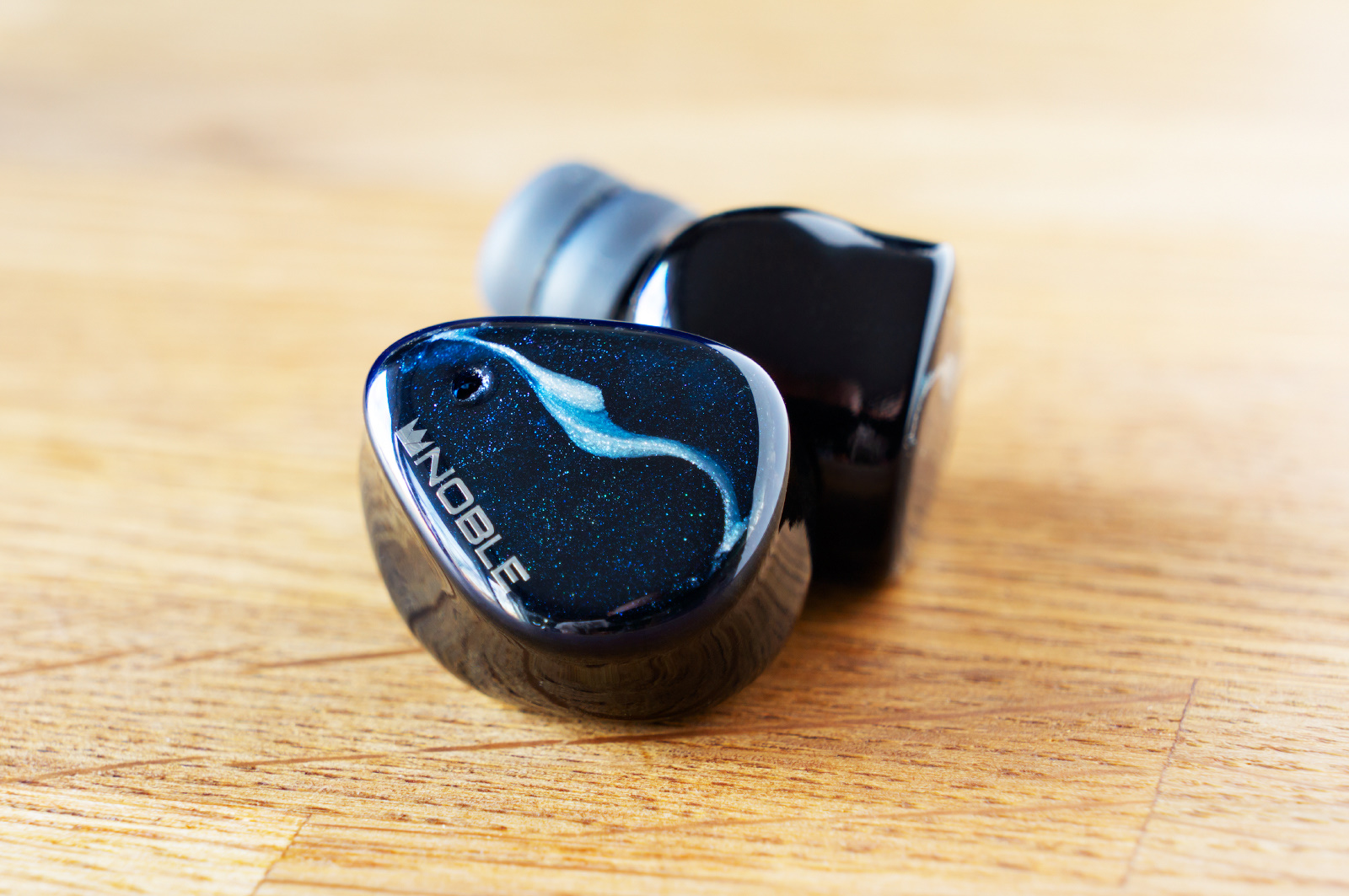
Under the glossy surface, there’s a nice try to live them up to their name with tiny iridescent sparkles scattered all over. Well, it really does look ‘mystique’. There are blue LEDs under the backplates. And I actually like such design concepts, especially when plastic is used for the enclosures. Think of it: the metal headphones make you uncomfortable at +5 °C already, and it only gets worse with the temperature dropping down. I wouldn’t want my ears to freeze to the headphones!
Ergonomics and comfort level
Talking about fit and all, these are actually comfortable to use. The shape allows perfect fit without pressure in any area, and they’re still comfortable even after 3 hours of uninterrupted wear. But! This was my own personal experience. Will these headphones suit awesome to every user? I don’t really think so: the headphones are quite large. The Linkbuds S easily wrestle the NFM down in this competition.
I’d like to point out the sound ducts, which are longer and thicker than those that are usually used in TWS headphones. These aren’t as long and thick as (porn joke – scratched) as the Etymotic ducts, but you’ll most likely have to play it with different eartips.

The included eartips, by the way, are excellent, especially the 2-flanged ones. They’re thin, they feel good against your ear skin, they’re perfectly soundproof and keep the earpieces in their places.
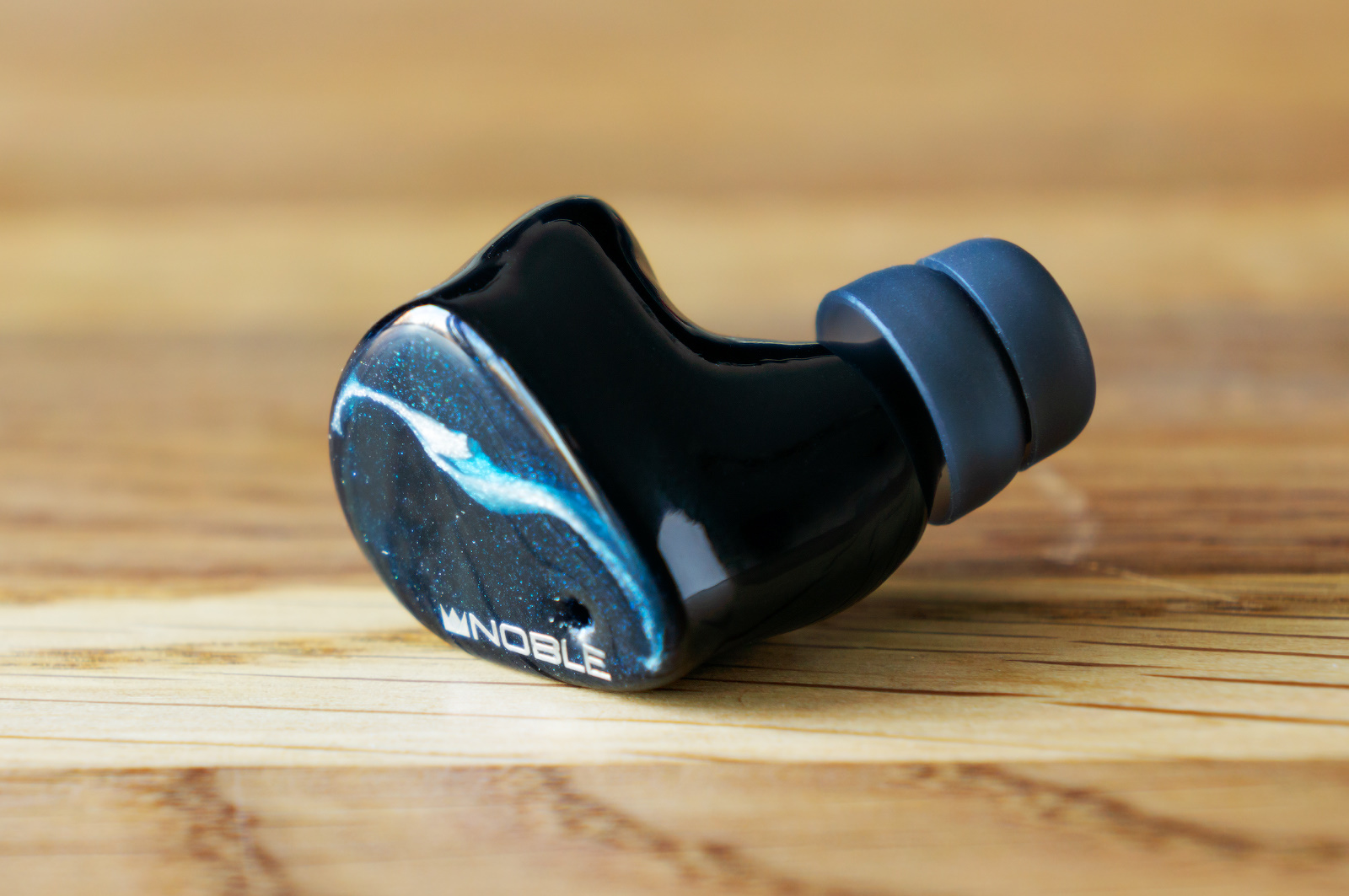
Now, let’s talk about additional functionalities we’re probably all used to with the headphones of the same or even much lower cost here. Well, there’s basically nothing to talk about. There are no sensors to detect if the earpieces are inside your ears, the talk-to-hear isn’t here. No active noise reduction, no multiple source connectivity, no wireless charging… Moreover, the control gesture configuration is very limited, and I’m going to cover this below. Want to know the exact battery level of the case? It’s a mystique, too.
That being said, I don’t really have any issues with the NFM construction and ergonomics, but the overall usage experience and their set of function kill me. These cost $360, for Crust’s sake! These should be able to brew me a cappuccino every other hour!
Mobile app
I have some serious suspicion here: what if the audiophile proprietary apps are all developed by the same dumb cack-handed outsourcer? The Noble FoKus app has all the glitches we’ve seen with the Moondrop, the Audeze and so on.
Updating the firmware to the same version? Yes, please.
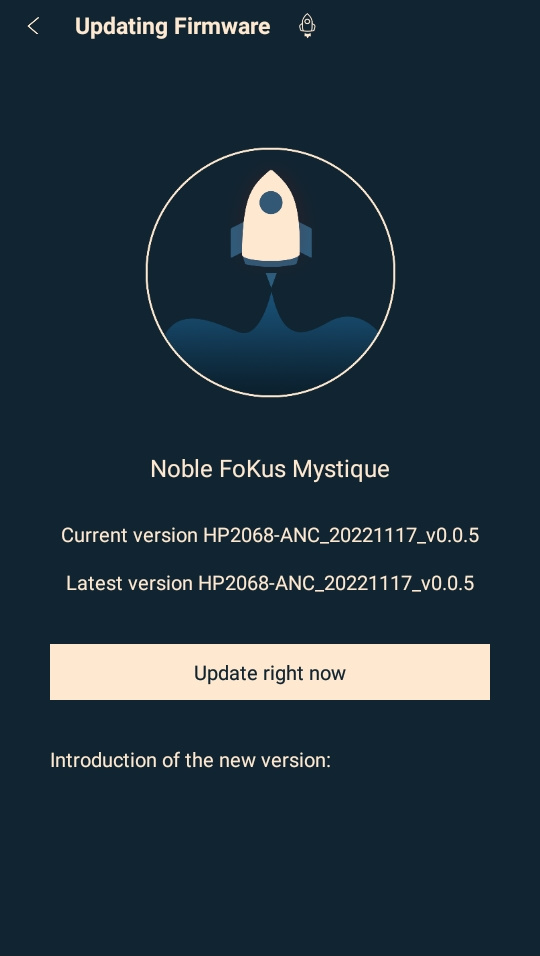
Buggy interface layout? Yep.
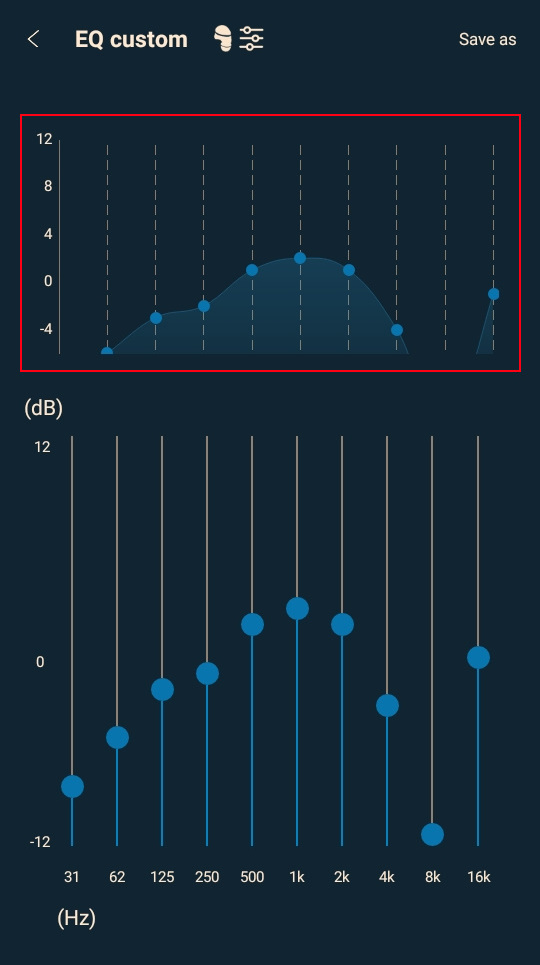
Ridiculous setting names? Check.
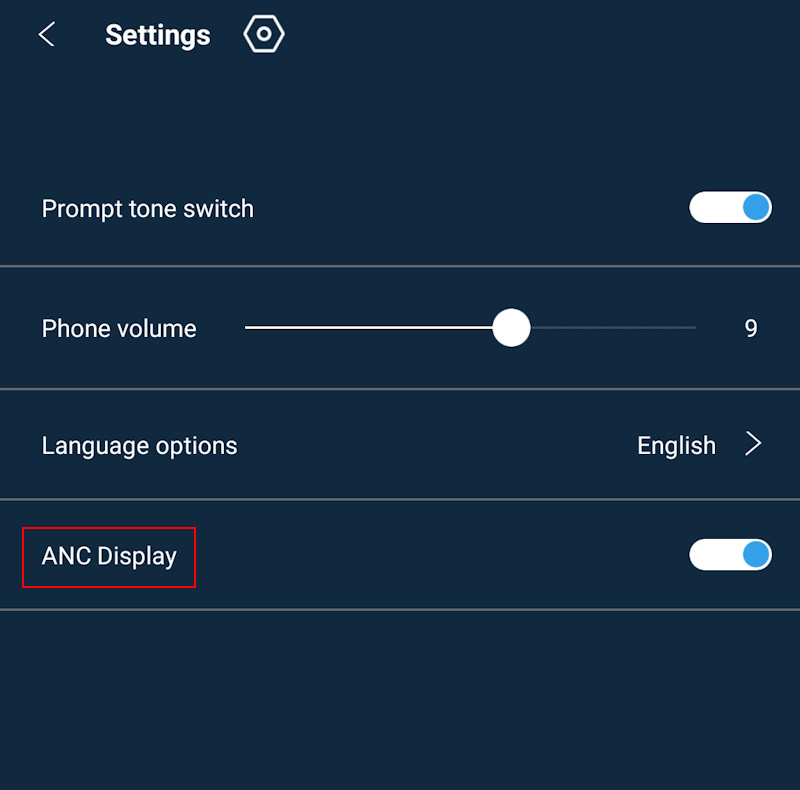
But enough kidding. The app has the following main features.
- Firmware updates
- Creation of custom presets via 10-band equalizer. And, you know, you can adjust the equalizer settings without necessarily playing any music. How do you like it, Audeze? Looks like your competitors have something of a breakthrough here!
- Enabling/disabling acoustic transparency
- Headphones battery level indication
- Reassigning control gestures
As for the control gestures, these headphones can detect single, double and triple taps, as well as tap’n’holds of different duration. At the same time, you can’t change action behind single taps: it’s always pausing and restarting playback on both headphones. The same goes for tap’n’holds. What you can change, (is to stop eating junk) are the double and triple tap actions. The trick is that you can’t learn about other gesture types, because there’s no in-app help section, alright?
There’s also a user-specific incremental sound calibration feature:

…which makes the sound worse than before you calibrate it.
Quick specifications overview
- Design: in-ear closed-back.
- Drivers: 1 dynamic + 1 armature.
- Bluetooth version: 5.2.
- Supported codecs: SBC, AAC, aptX, aptX Adaptive.
- Multipoint connectivity: N/A.
- Active Noise Cancelling (ANC): N/A.
- Battery operation: 7 hours. The case has a battery capacity worth of 4 full charges.
- Water resistance: N/A.
- Case weight: 64 g.
- Headphones weight: 7 g each.
Just so you know: the WF-1000xm4 weigh 55 g (case + headphones).
Sound: subjectively
I’ve been testing these headphones for about 20 hours with Galaxy S23 Ultra smartphone (AptX) and Hiby R5 (AptX HD) player as sound sources.
With the default settings, that is before you learn what’s what with the equalizer, the NFM sound incomparably bad. The infamous John ‘Wizzard’ Moulton seems to be the sounding boss across the Noble Audio model range, right? I have no idea what kind of school of wizardry and witchcraft he attended, but he certainly skipped quite a lot of sound-related lectures. There’s some extremely inflated subbass and an annoyingly tutting top of the frequency range – and that’s quite all the NFM demonstrate right out of the box. The midrange here isn’t just a little bit lower than it should be – it’s freaking cut off. Everything is covered with a thick and stinky layer of something, which isn’t even subbass… It’s a noisy, gloomy stirring of sounds in the lower frequency range, seasoned with a piercing rough ringing.
I mean, the default NFM sound is THAT bad, I’m not exaggerating in the slightest. Do I even need to try and analyze the sound stage width or any technicalities of the sound delivery? You wouldn’t try to describe the taste of your punch even if there’s only a wee piece of turd floating in that bowl, huh? You want to know how many turds there are in the NFM punch? Probably half of the bowl.
This is why I rushed to tune the NFM sound right away using my measuring rig and a proprietary app equalizer.

When this happened, the sound’s got a lot better!
Of course, I couldn’t stand a chance against that overinflated subbass, but at least it doesn’t harm your hearing anymore – it became a tasteful thing suitable for many music genres. Who’s the real wizzard now, Noble Audio? Thanks to the same methods, the headphones quit mumbling and are now delivering the sound just somewhat more heavily than the original recording material is.
Mid-frequency range. It emerges, it becomes audible, it’s now clearly present in the tracks. And, I must admit, this can easily be one of the best midrange interpretations I’ve ever witnessed! That armature drivers can do their trick here, or it could be anything else – I don’t know! My only question in here is how could you manage to mutilate the sound that much with the default setting! After equalization, the middle frequencies become accurate, clear, a little finer (than I personally like it) and pleasantly spicy. That’s a very good midrange, guys.
The upper frequencies somewhat fall into place – or at least around that place. These only clearly and unpleasantly dominate in some unfortunate tracks. A feeling of ‘airiness’ and of actual width of the sound stage emerges.
What I’m trying to say is that after the equalization, the NFM sound moves from the Beats Audio and pals league to a completely different category and competes with the WF-1000xm4, Linkbuds S, Airpods and other models with really good sound. It’s not easy to pick a winner in that second category, since sound tuning is a matter of personal taste and the equalized sound doesn’t differ any dramatically. In terms of sound stage volume, however, the NFM are really-really close to winning the race.
Measurements
The measurements were made using a rig conforming to the IEC60318-4 standard – with an auricle and auditory canal simulator. The smoothing is indicated on the graphs. I’ve described the limitations of the rig and the headphones measurements in general in this article.
The frequency response curve is so bad here, that I’ve literally found myself stuck. For, like, the third time in my measurement life. I couldn’t decide how to position the graph relative to the target curves so that I could evaluate the sound essence in a more or less adequate way.
And that’s what I came up with. This one is the default NFM tuning:
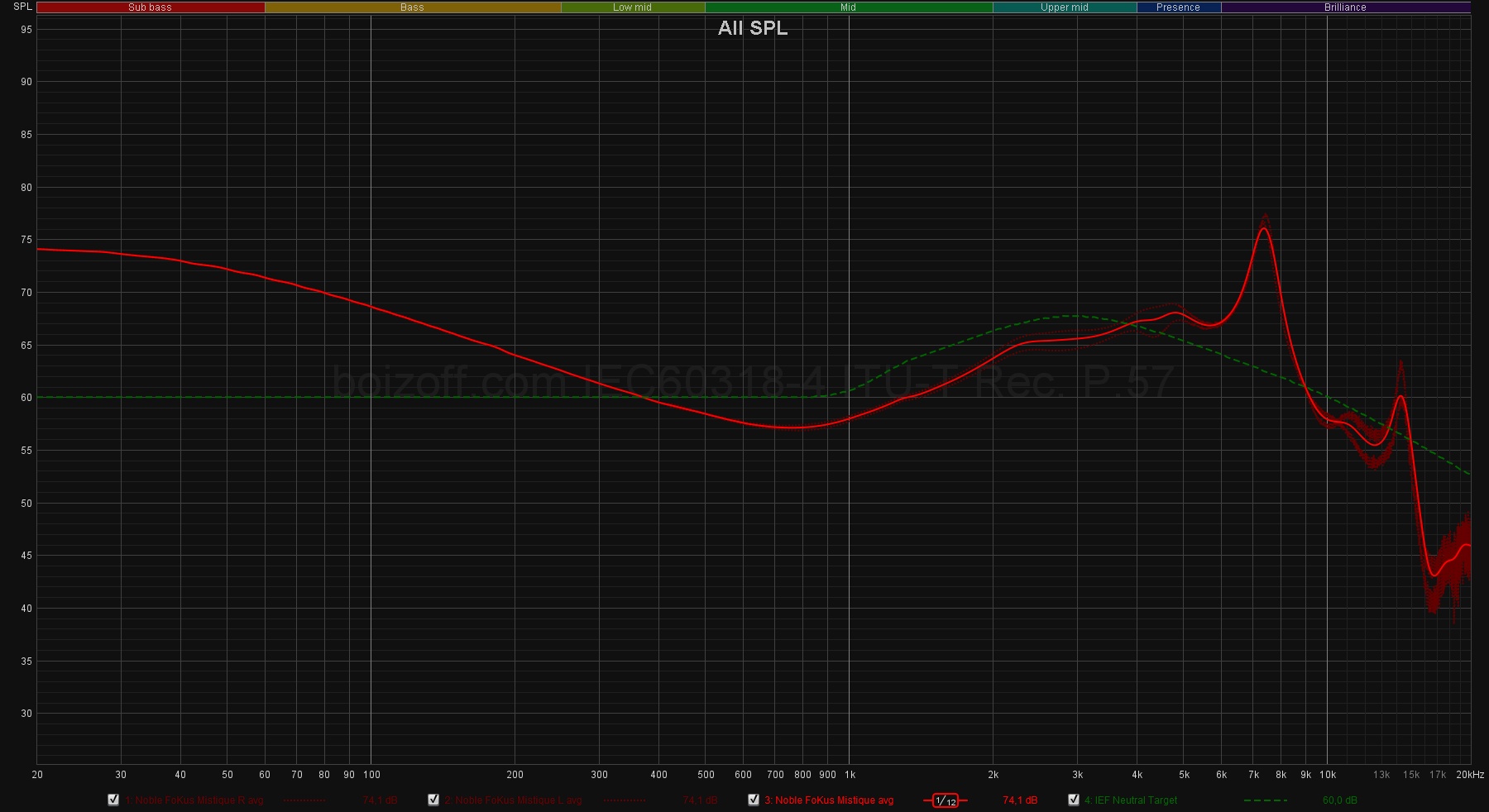
As you can see, the subbass is raised by 12 dB (which is 4 times a norm), the middle is lower by 3 dB across the entire graph, but look at that Everest Mountain around 7.5 kHz!
‘Kinda looks Harmanish’ to you? Nope, it’s not Harman here:
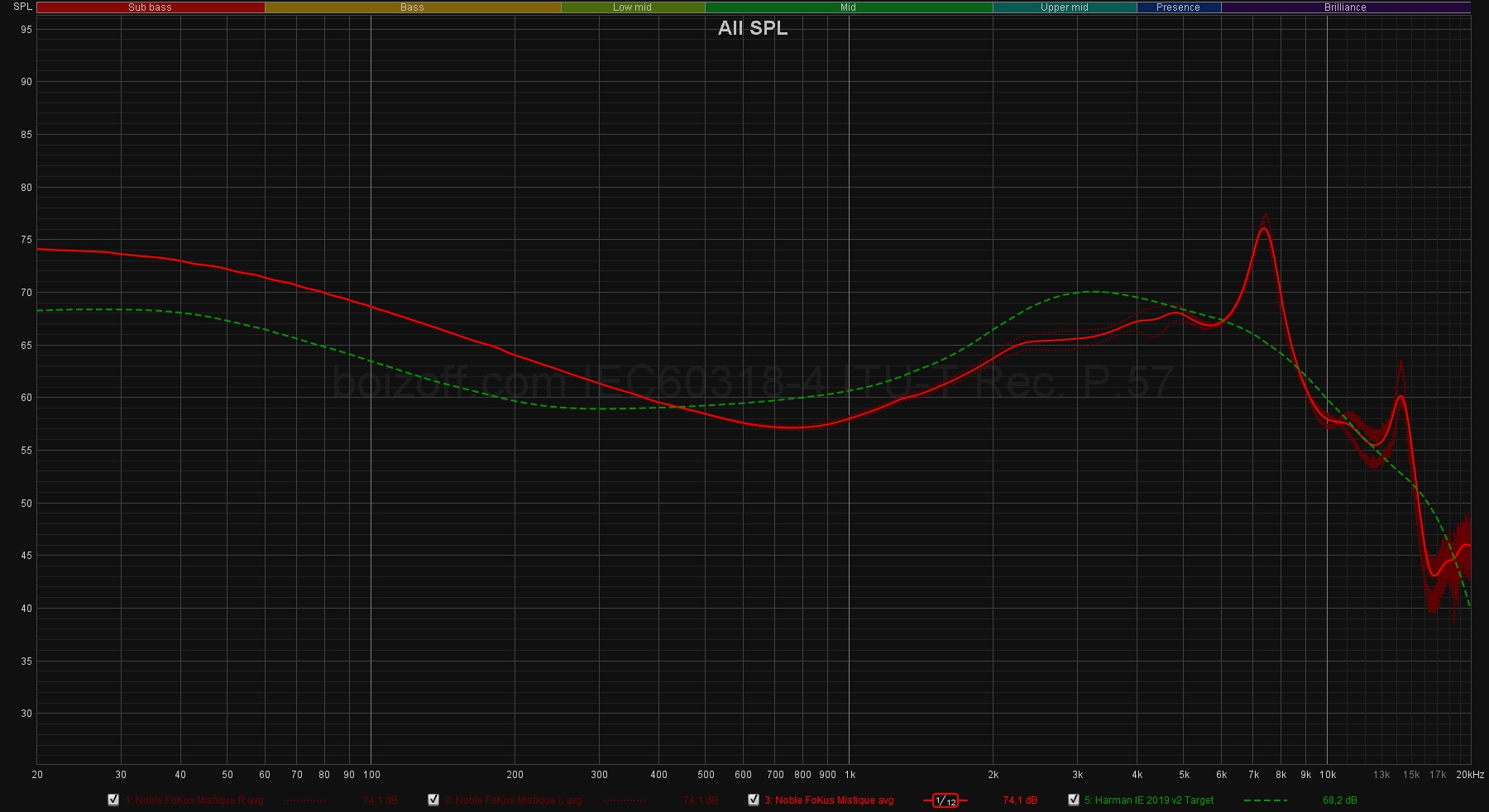
After equalization, the sound delivery is much smoother, although these peek-a-boos around 20 and 7.5 kHz won’t go away:
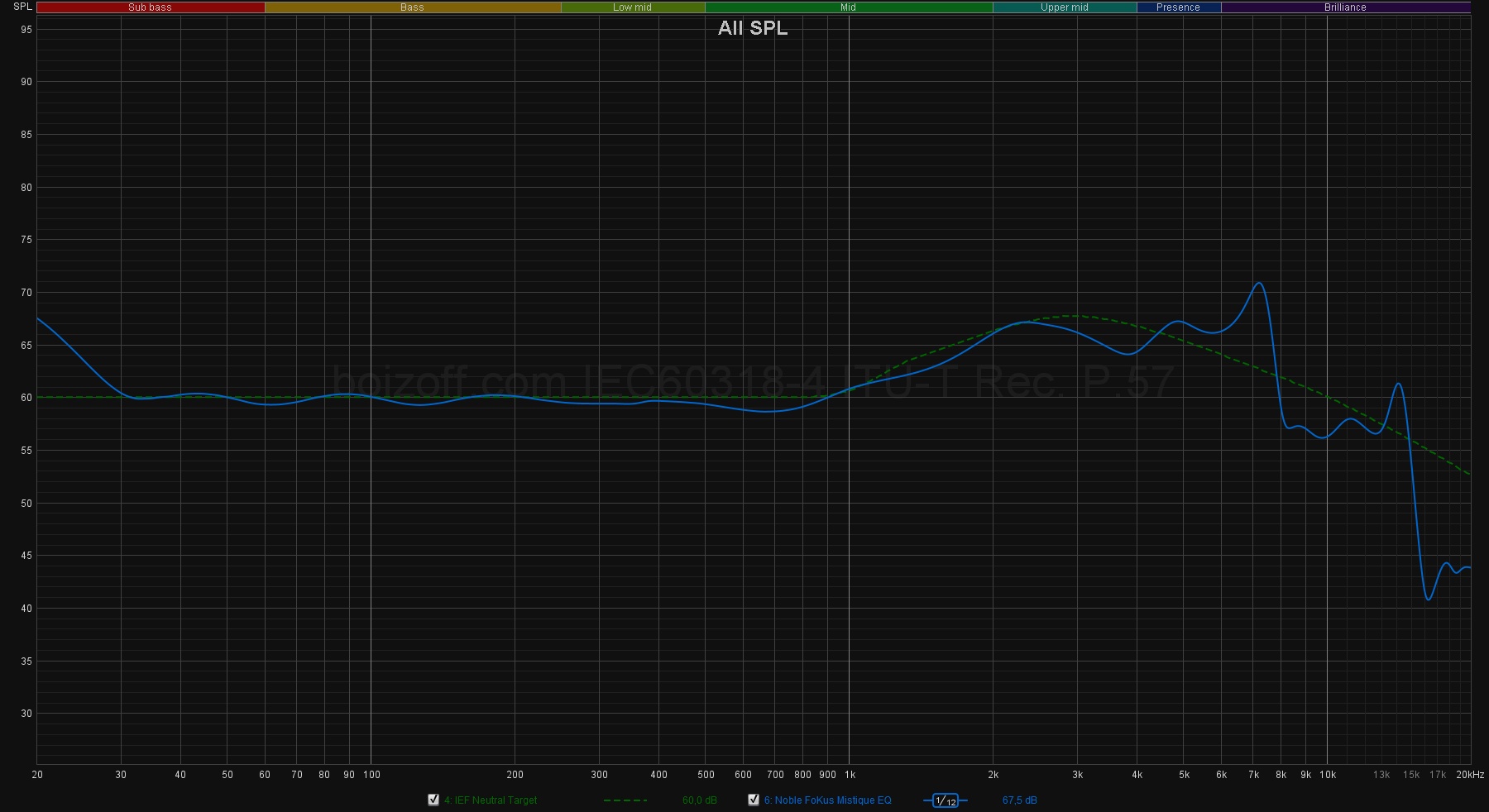
Summary
I can’t quite put a finger on a type of audience the Noble Audio chose as their target one with this model. Can’t even think of any target audience at all. Look at the price – it’s $360! Pay this, and only get any decent sounding only after you somehow pick an equalization set correctly, as well as a very limited set of additional features and a pretty dumb mobile app. Wouldn’t be happy about the purchase, if you ask me. Oh, and don’t forget a number of technical glitches such as unstable connection to the sound source.
I daresay that the Linkbuds S, for example, sound somewhat similarly to the NFM in terms of technical execution. But for half an NFM money and with a whole lot of cutting-edge advanced features on top. Moreover, the Linkbuds S don’t depend on the Qualcomm chipsets, because the LDAC is used in them. The sound is never interrupted, too.
Why is that you don’t notice Noble Audio users around you – in the bus, at work, in the gym? ‘Cause no pain – no gain. You can’t just take a renowned brand name, add some ENT knowledge and old successes – to reach any good results, years of constant tries and improvements are needed. Improve the hardware! Refine the freaking software! Get some intel from your competitors! And set adequate prices, that’s it.
My sentence is: don’t buy these.
And if you like such a tuning, try considering the Anker Soundcore Liberty 3 Pro.

